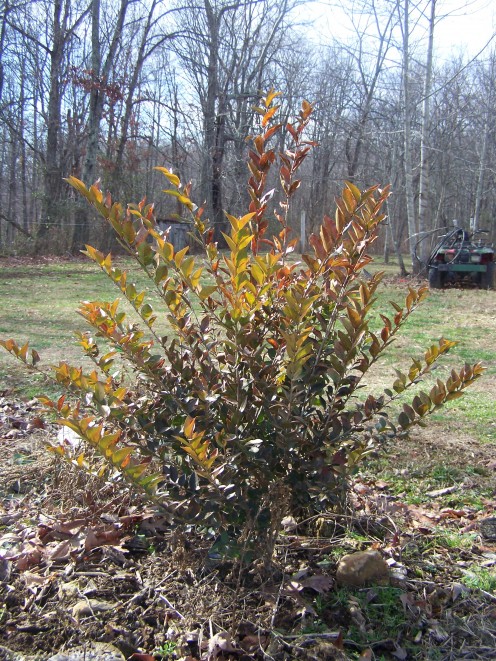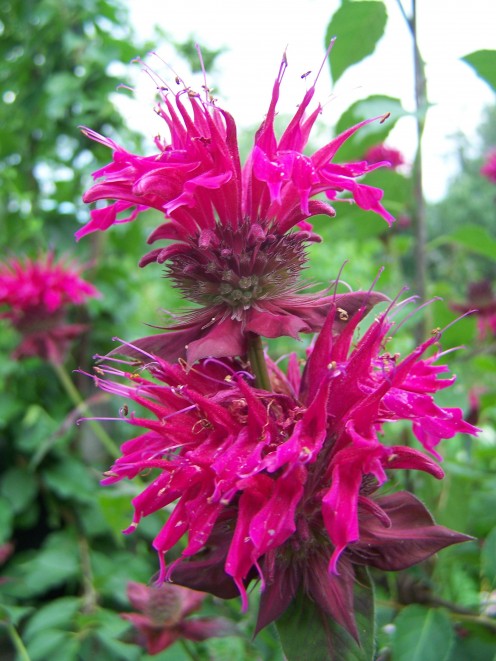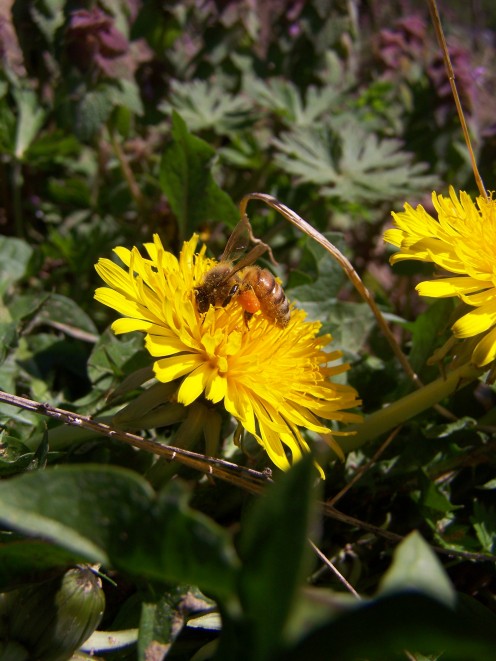Hedgerow Planting Ideas

Plant an herbal hedgerow to keep your animals contained as well as to feed them. Hedgerows add beauty to the landscape and can increase property values.
© Copyright Notice ©
My photographs are mine, taken by me, with my camera. You may use them for personal reasons (desktop backgrounds, personal websites or you can print them for personal use.)
If you choose to use them on websites I require a link back to my HubPages. You may link to my profile or to one of my Hubs.
You may not use them without my permission or for profit.
I sell my art and if you are interested in purchasing it send me a message.
ALL of my articles are MINE and you may NOT use them for anything but reading on my page.
Prepare your Ground Before Planting!
Figure out where you want the plants and then till the area thoroughly. Add as much organic matter as you can now. Goat manure, cow manure, chicken manure, sheep manure, even pig and horse manure can be tilled in before planting. Also, if you have access to them, add red wigglers to the tilled soil.
I like to do things like this a season in advance, if possible. A resting period is essential if you're using hot fertilizers like raw dung. Allow the tilled area to sit, mulched, for a few months, at least, before planting.
Consider your hedgerow like a winding vegetable garden. Provide it with proper soil, food, sun, and water, and you will be rewarded for the rest of your life.
It is important to keep your animals off the hedgerow until it is established quite a bit. Do this by fencing them in with traditional fence wire. As long as they cannot reach their heads through the wire and destroy the plantings, the new hedgerow should do well.
Keep in mind, it may take several years for your new hedgerow to become thick enough to actually keep your animals in. A solid planting is required or animals will easily find weak spots and be lost. While the hedgerow is growing, use regular fencing to keep your animals in.
For filling in open areas before your plants have a chance to grow in, try stacking thick brush as a natural fence. The thicker you pile the brush on, the tighter the fence will be. It is very important to get a dense brush line when doing it this way.
Make sure the animals cannot squeeze through weak areas.
Plan Your Base Trees and Shrubs:
Every hedgerow needs to have a solid base. My hedgerow will contain a base selection of pomegranates, wild roses, privet, slippery elm tree, and a few other easily grown species. I am choosing to grow species that grow quickly, like the privet. I will likely include a short stone wall in some areas. I am "in to" photography and stone makes a beautiful backdrop for a picture. It is also strong!
Privet:
When solidly planted and properly cared for, privet hedge will grow very fast and become thick at its base. My goats adore eating not only the foliage and stems, they love the berries, especially in fall and winter.
Plant the privet closely together. One to three feet apart should give you a really nice fence line. Keep in mind, goats love privet and can eat through it pretty quickly.
When you are growing the privet, whack it off the first year to promote branching. A slightly involved way to speed up the fencing process is to braid the privet limbs together to form a living fence. Secure the branches with garden twine that will eventually rot away. Once the branches grow into each other, the fence will strengthen over time.
Roses:
The roses I am using are wild. They produce copious amounts of delicious, and healthful rose hips and the plants themselves are thick and covered in sharp, nasty thorns. They are a perfect addition to the hedgerow. Roses should be considered an essential part of livestock diet. They provide vitamin C, as well as other nutrients that will benefit your animals.
Pomegranates:
I chose pomegranates because they grow rather quickly from seed and the plant is medicinal. It is also beautiful when in bloom. I will post another Hub on how to grow them from seed.
I am in zone 7-8ish, in Middle Tennessee. I may or may not get fruit from the pomegranates. Though I would love the fruit, it is not essential in my hedgerow. There is a distinct possibility that the pomegranates will die back to the ground each winter here. I will plan ahead and make sure I have a nice line of privet and roses in place, just in case.
I am positive my base list will grow and change as I discover more wondrous plants to add.

Herbal Plants for the Hedgerow:
Some herbs I plan to add to my hedgerow include, but are not limited to, yarrow, dandelion, soapwort, comfrey, mugwort, wormwood, thyme, wild mint, wild lettuce, wild mustard, bee balm, lavender, sweet violets, creeping Charlie, wild garlic, wild onions, raspberries, blackberries, wild strawberries, thistle, stinging nettle, St. John's Wort, and wild evening primrose.
All of these plants are medicinal and safe for my goats. Most all grow wild, en` masse on my property as well.
The goal with your herbs is to sprinkle them throughout the base plants. These plants will grow to fill in small spaces and provide food and medicine for your animals. They also add beauty and a place for honeybees to collect nectar.
There are other herbs to add to hedgerows but they escape me at the moment. I will add more as time allows.
Stay tuned for next season's Hub with photos of the planting process and additional ideas for your hedgerows!









